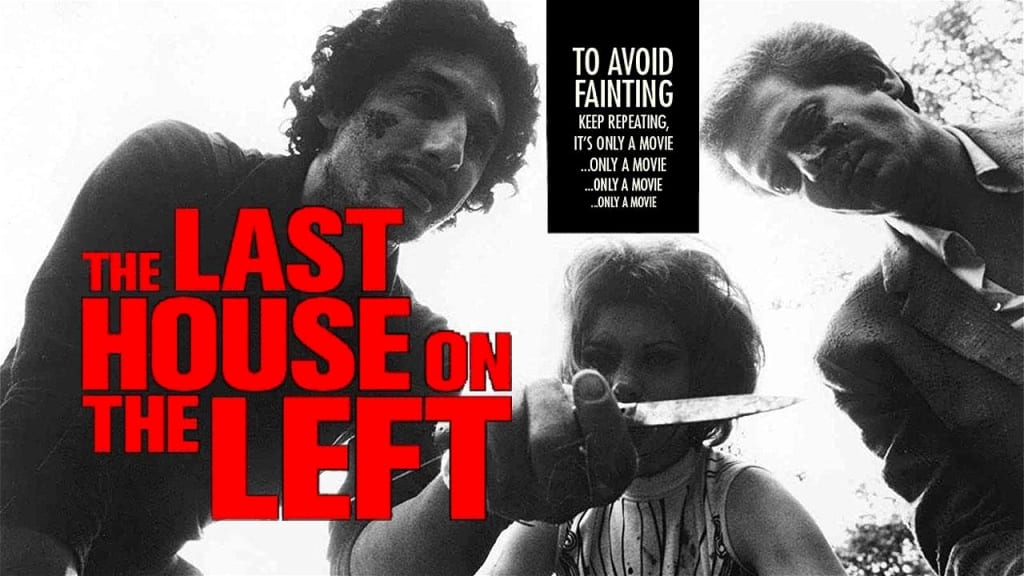The Road to Nowhere
The Last House on the Left (1973) Original Soundtrack by David Hess

Reviewing a record album is always a difficult prospect, as music, unlike cinema, has intangible aspects that cannot be easily quantified and assessed. Music is an intensely personal experience, and each vocal or sound can mean something entirely different to each individual. Indeed, a piece of music will recall a particular era or even a certain moment in time, each experience remembered peculiar to the individual listener.
The Last House on the Left, Wes Craven's infamous 1972 shock fest, stirred controversy when it was released, only to become a cult classic over the decades. Its (for the time) shocking level of violence and sadism--torture, rape, mutilation--is juxtaposed against a tragi-comic story of a duo of bumbling local lawmen, a bourgeois doctor, and his wife who is preparing a birthday party for a girl who never returns home. The girl and her low-class friend meet four criminals, each of them comic grotesques , caricatures of the sort of wanton, depraved menaces to society portrayed in cheap paperbacks and television crime shows. Each of the Baddies (so referred to in the soundtrack song titles) is a compelling if not likable character, more fully fleshed-out than the middle-class doctor and his wife or the screwball local fuzz, who, much as the song says, "are looking for someone to get their car started again."
The soundtrack album is by Last House actor David Hess, who wrote "All Shook Up," for Elvis Presley (he recorded it under the name "David Hill"), and who also wrote songs for Pat Boone and Andy Williams. His rock opera The Naked Carmen, written with composer John Corigliano, won a Grammy. His portrayal in Last House works mysteriously for the viewer, and he is as menacing as he is fascinating (his background being automatically the subject of speculation). As Krug, the sadistic leader of the Baddies, he's repellent yet charming. He's also the father of Junior (comedian Marc Sheffler), who he hooked on heroin to control. Sadie (actress Jeramie Rain, in a role inspired by Susan Atkins) is a wild-haired, protopunk with a charming Southern accent and is implied to be bisexual. Rounding out the cast of Baddies is porn actor and director Fred Lincoln, who plays the sex offender "Weasel" Padowski. The story of the Baddies is celebrated on the soundtrack in an old-fashioned barbershop murder ballad with self-referential lyrics: "Weasel and Junior, Sadie and Krug, out for the day with the Collingwood brood [...] let's have some fun with those two lovely children and off 'em as soon as we're done."
The music is upbeat, uptempo; cheerful. Corny, but intentionally so, juxtaposing the brutality of the murder ballad lyrics with the black humor of the characterizations. There's even a kazoo part.
"Wait for the Rain," the most famous piece of music from the soundtrack, the most memorable, has, by contrast, a forlorn, hallucinatory despair to it, a sense of recalling what is lost because, finally, the "road leads to nowhere." The opening credits theme features the chorus: "And the road leads to nowhere, and the castle stays the same [...] wait for the rain." The suburban castle's inhabitants are expecting a downpour, which may cleanse away the dust and dirt, the blood that accrues when we realize our fantasies of an impregnable fortress of our lives, is, ultimately, a mirage.
Other songs, "Urban Snatch," the "Ice Cream Song," and the version of "Wait for the Rain" played as Phylis (Lucy Grantham) and Mary (Sandra Cassel) are drinking wine at the river that Mary will walk into later to be shot, all feature that same sense of corny irony, with a hideous undercurrent of fear. "Urban Snatch" is seventies funk; other songs feature snatches of old-time saloon piano man pounding, touches of classical, and, during the murder sequences, noisy, early experimental synth. (These synth blasts underscore the brutality, which could hardly have been represented by music that was not atonal, strange, and unpleasant.)
Mary is killed, though, to a traditional, folksy, sad song, "Now You're All Alone," a song that will stay with the listener for a long while after, the bluesy ballad informing the listener (or simply giving vent to an imaginary protagonist) that "now you're all alone, now you're by yourself." The singer ponders that the "hand of the Lord" may be upon the listener. But, not, the viewer can see, in Mary's case.
The Music of Menace
The incidental music, the low-key stuff playing over scenes as the movie progresses, is heavy bass lines that use a variation of the melody of "Wait for the Rain." Occasionally a guitar is strummed, and we get a few pops on a snare. Hess was a multi-instrumentalist, and his exploration here of styles ranging from funk, to folk, to country, barbershop quartet, and moog synth all combine flawlessly on a vinyl platter that dips as easily into strained and mercilessly tortured gaiety and sardonic humor just as much as it dives into horror, melancholy, and gloom. It jumps up and introduces itself with a fulsome smile, perhaps with blood drupping from its fingers. Below the surface, though, there are those aforementioned stark, slithering moments of empty, stealthy menace. The cheeriness is an interesting, ironic, surreal counterpoint. The rest is nearly flawless.
All in all, the album will take you to another era, a time when such cinema, the ugly, gritty, dark, and rebellious work of the guerrila fillmakers and exploitation aartists of an era that challenged the conventions of cinematic decency, at a time benumed by Vietnam, protests, civil unrest of every kind, an era that foretold a future that, in July of 2024 we have accelerated into at an alarming velocity.
Sadly, David Hess, the brilliant actor and musician, passed away on October 7th of 2011, in his home of Tiburon, California, after, ironically enough, leaving a concert. He was seventy-five. During his life, he had taken on the hats of actor, director, producer, AR man, etc, and appeared in cult films such as Wes Craven's Swamp Thing (1982) with Adrienne Barbeau, and Ruggero Deodato's House on the Edge of the Park (1980).
But he will forever be Krug to many, many hardcore fans of Last House on the Left, who see in the picture something even the writer and director Wes Craven (also sadly gone now) didn't: a buried cinematic milestone, a celluloid shocker that was actually a testament to troubled times. It's message still resonates today; it's song lingers on.
The road leads to nowhere.
THE LAST HOUSE ON THE LEFT (1972) [FULL VINYL]
Websites:
Connect with me on Facebook:
About the Creator
Tom Baker
Author of Haunted Indianapolis, Indiana Ghost Folklore, Midwest Maniacs, Midwest UFOs and Beyond, Scary Urban Legends, 50 Famous Fables and Folk Tales, and Notorious Crimes of the Upper Midwest.: http://tombakerbooks.weebly.com






Comments
There are no comments for this story
Be the first to respond and start the conversation.